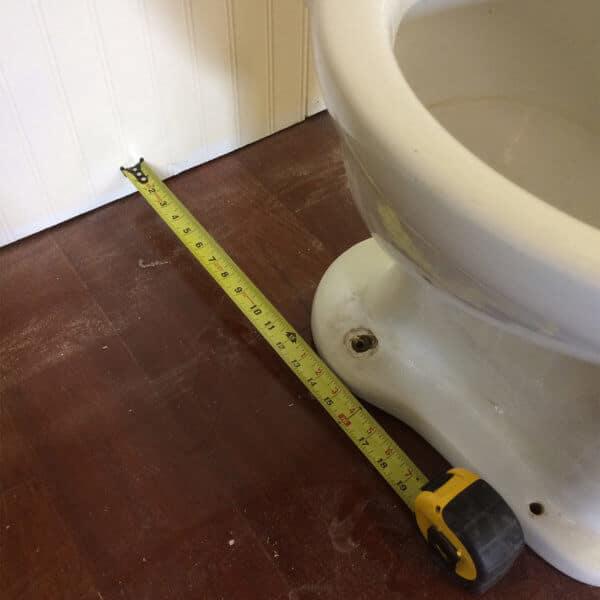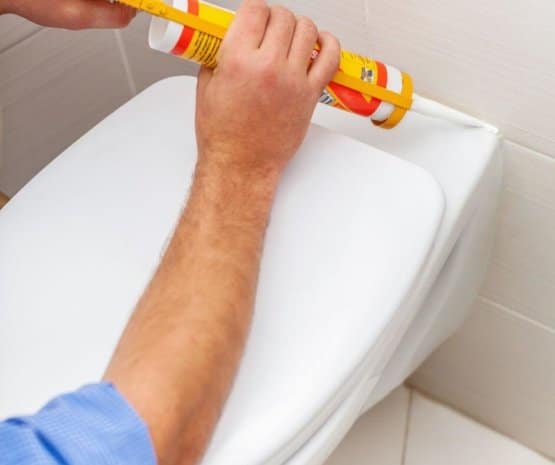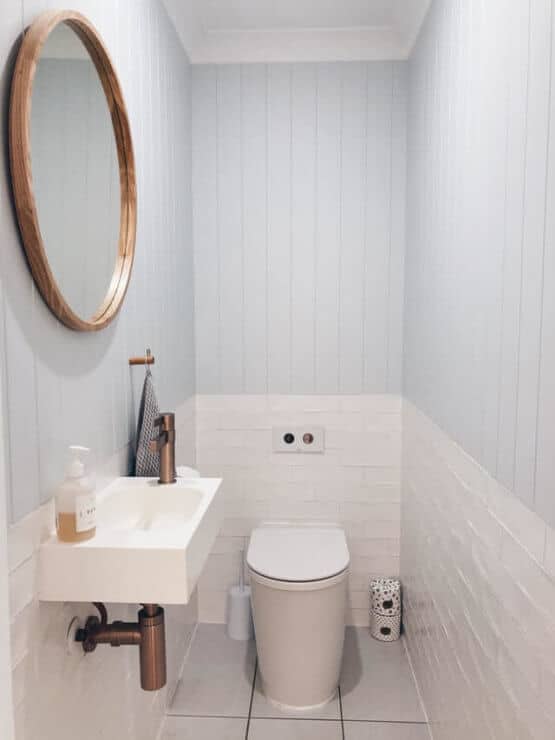Knowing how to choose between wax vs waxless toilet seal might save you some nightmares in the future. Truth be told – nobody wants to deal with the leaky toilet. This can be prevented with the proper installation of the toilet seal.
Plumbing repairs can be costly. So, before you phone a plumber for this, consider saving some money and replacing the toilet seal by yourself.
Wax vs Waxless Toilet Seal – Before Installation

It’s most likely one of two situations that brought you to the making of this decision.
One possible situation is that you are installing a new toilet. In that case, it’s important that you choose a proper toilet bowl beforehand.
Consider the option of choosing either elongated vs. round toilet, or between comfort height vs. chair height toilets.
In the second case, you probably noticed a toilet leak when flushing. If you notice a leak underneath the toilet, you’re most likely in the need of a toilet seal replacement.
Now, let’s dive into the pros & cons of wax vs waxless toilet seals.
Pros & Cons of Wax vs Waxless Toilet Seal
Wax toilet seals are the most commonly used, traditional types of toilet sealants.
Although called wax sealants, they are either made from beeswax or are petroleum-based. Either way, they make for a reliable sealant between a flange and the toilet bowl.
PROS
- They are a plumbers go-to option, used for decades
- Cheap
- Highly durable (can last up to 20 years)
- Perfect for high flanges that can’t be lowered
CONS
- Harder to use & can create a mess
- Not reusable – you only get one shot at installation
- Can slightly shift overtime
- Melts on heated floors
Generally speaking, wax toilet seals are much cheaper than waxless ones but can be harder to use. However, once a toilet bowl is placed on a flange with wax on, its weight creates a perfect seal.
If you’re replacing a toilet bowl yourself, you may need another person to help you out. Also, you may need more than one try to place a toilet bowl perfectly. [1]
In the case of wax toilet seals, readjustment is not possible. If you misplaced it on the first try, you have to throw it away and buy a new one.
Placing a toilet bowl correctly largely depends on the height of the flange on the bathroom floor.
Waxless toilet seals appear to be a newer option, allowing for an easier approach to toilet bowl installation.
Most waxless toilet seals are made of dense rubber, which is also flexible enough for any readjustments during the installation. Many of them come in easy-to-use kits.
PROS
- Mess-free, since it doesn’t contain wax
- Easy to use
- Readjustable
- No need to worry about temperature
- Makes up for flanges set too low (no need for adapters)
CONS
- They cost more
- Usually less durable than wax ones (approximately 10 years warranty)
- Instructions may not be as clear
Among the other pros, ease-of-use might be the most important feature of waxless seals.
This is mainly because using waxless sealants is mess-free. However, if you’re a beginner, it might be hard for you to follow up on the instructions on the kit. More on that later.
Contrary to the wax sealants, if flanges are set too low, you won’t need any adapters. The waxless toilet sealant will make up for that lack of space.
Wax VS Waxless Toilet Seal – What Is The Best Toilet Wax Ring?
As you could notice by now, choosing between these two types of sealants mainly comes down to personal preference. However, there are still some specific situations in which you will be better of with one, and not the other.
When considering whether to choose wax vs waxless toilet seal, there are some things to consider beforehand.
Here are 5 things that you need to look out for:
- Cause of The Leak
Don’t get into replacing the toilet seal immediately after noticing the leak. First, you have to be sure where the leak is coming from.
If it’s from the floor, try tightening the bolts first. If it’s from a toilet tank, it’s a whole another story. [2]
Also, the situation is different for wall-mounted toilets. In that case, if the wall is leaking, you might be facing other wall-mounted toilet problems.
- Type of Flooring
If your bathroom has radiant floor heating, the best option for you will be to use the waxless toilet seal. This is because the wax ones can melt under high temperatures and cause leaks.
That doesn’t always happen, but plumbers usually advise against them, in this case. You definitely want your toilet bowl to have an airtight and watertight seal, so no leaks can occur.
- Ease of Installation
Having your toilet fit perfectly is of utmost importance. Not doing it right can cause your toilet to rock, leak, and leave space for foul smells and harmful bacteria.
Wax toilet seals are harder to install – you only get one shot at it. If you misplace it for the first time you put a toilet bowl, you have to replace the seal.
At least wax toilet seals cost way less than waxless ones, so you won’t be wasting too much money. But you will be wasting more time cleaning up the mess.
So, if you’re not a skillful plumber, the waxless option is for you.
- Readjustability
This feature is closely related to the previous one. The adjustability of a toilet sealant greatly impacts the ease of installation.
Waxless toilet seals are easily adjustable. If you misplace the toilet bowl for the first time, you can reposition it until it fits perfectly.
- Durability
Both of these toilet seals can last more than a decade.
However, the waxless toilet seals are more easily removed in the need of replacement. The cleanup time is also shorter.
The traditional wax toilet rings typically last longer (up to 20 years), whereas the waxless ones come with a 10-year warranty.
Traditional Wax Toilet Seal How-To
For those less experienced in bathroom repairs, it’s best to follow a guide on how to install a toilet.
When replacing a wax toilet ring one has to be more careful, as there is no room for readjustments. That being said, if you decide on this option, it’s best to ask one more person to help you out.
To replace a wax toilet ring, follow these steps:
- Remove the wax residue
- Replace the flange bolts
- Attach a wax toilet seal onto the flange in the floor
- Place a toilet bowl on top of it
- Bolt the toilet to the floor
Do Waxless Toilet Rings Work & How To Install Them?
They certainly do! Plenty of customers swear by this easier and mess-free option.
With removing the previously placed waxless toilet seal, there is no mess you have to clean up. If your toilet is rocking, you can consider replacing the toilet flange first.
After detaching the toilet bowl, all you need to do is to place the seal on top of the flange. Then, place a toilet bowl on top of that fixture.
After bolting, turn the water valve on and flush to check for any leaks. If there are not any, you’re finished!
The Takeaway
Choosing between a wax vs waxless toilet seal in most cases comes down to personal preference.
Wax-free options might be more suitable for beginners because it’s mess-free and easier to install. But if you prefer a traditional, more durable way, choose the one with the wax.

Michael Davis is a heating & plumbing expert who currently works as independent contractor in SC. He also writes for Plumbertip.
For almost 10 years he worked on various plumbing tasks across South Carolina.




